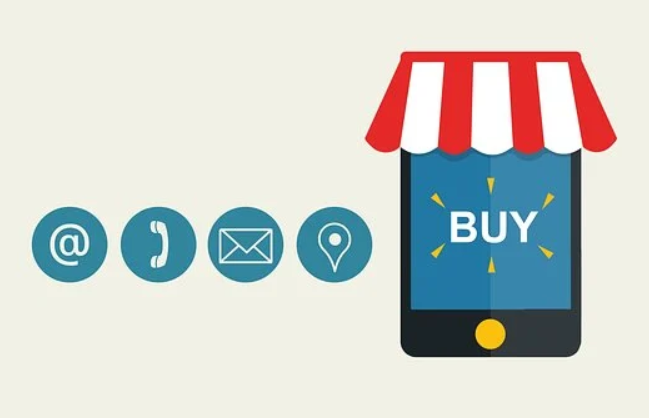

Conversion means different things for different businesses.
It may mean getting audiences to provide contact info for , converting prospects to paying customers, or subscribing to your newsletters.
Yet driving conversions is no mean feat.
Today’s audiences are savvy people who don’t just settle anything unless it’s beneficial to their business.
How do you prove value and drive conversions?
We’ll look at several that may help nudge your audience to perform the desired actions.
1. Conversion marketing
 This strategy encompasses tactics that maximize the percentage of website visitors that take desired actions.
This strategy encompasses tactics that maximize the percentage of website visitors that take desired actions.
Sounds right on track for what we’re looking for, doesn’t it?
Here are strategies you can employ:
- Create solid content. We suffer content overload and most of it is a regurgitation of what we already know. Go beyond the surface and put together research-backed quality content to attract audiences and boost engagement.
- Include eye-catching CTAs in your copy and landing pages to inspire audiences to move forward. Replace the usual cliche CTAs with those that demonstrate value such as “Learn more,” “Get the benefit of this (product) today,” or “Start your free trial”
- Use video for the different stages of the purchase process. Video can increase awareness and inspire desire, or provide useful information for building trust and authority at the awareness stage. At the conversion stage, videos covering testimonials, detailed product information, or brand comparisons may help lay to rest any doubts.
- Don’t neglect email marketing. Email marketing creates awareness and builds stronger connections. Personalize emails so audiences feel you’re addressing only them, make the campaigns fun by incorporating interactive content and share attractive offers to pull in prospects.
2. Prioritize customer experience
 According to McKinsey & Co, the customer experience index rating in the B2B world averages less than 50 percent.
According to McKinsey & Co, the customer experience index rating in the B2B world averages less than 50 percent.
The company also states that improving customer experience can increase your win rate by 20-40 per cent while lowering customer churn by approximately 10-15 per cent.
Not only are customers not satisfied with businesses, but they are also likely to move if they find another brand that switches up their experiences.
If you want to improve customer retention and drive more conversions, you’ve got to offer better customer experiences.
How?
- Get everyone on board. All employees—customer-facing or otherwise should have a shared purpose, which is the commitment to delight customers.
- Invest in the right technology. Customers love friction-free experiences, whether they are downloading stuff, making purchases, upgrading, or simply browsing your website. Identify areas where most visitors get stuck, or abandon your site and correct the problem.
- Leverage data. Real-time data can help you identify customer intentions and behavior and share predictive analysis. This allows you to tailor the solutions potential customers are looking for.
- Ask for feedback. How you perceive your solutions is one thing, and how customers receive them another. Feedback gives you a feel of the ground reality and you can use it to redirect your efforts towards improving experiences.
3. Cold Calling
There are many solid tips out there, but today we’ll focus on three areas that may help increase your success rate.
The Customer says, “Send me something.”
Most of us take this as a good sign—I mean, the prospect wants to know more, right?
But on following up several days later you realize they haven’t looked at the material.
You give them a couple more days and the story is still the same.
The moment you “send something,” you lose control of the process and it can go any way.
Rather than rush to send material, ask the prospect, “What would you like to know that’s not clear from our conversation?”
This question forces the prospect to communicate what’s on their mind and gives you the chance to share value.
Make the ROI case strong
Businesses hardly shy away from solutions that offer great returns.
Before calling a prospect, figure out how to justify your solutions so they make financial sense to the prospect.
Avoid exaggerating or giving wrong numbers just to make a sale.
Turn objections into answers
Objections are mostly unanswered questions.
Prospects raise objections because they don’t have the right answers and won’t buy unless these concerns are addressed.
Have your team share objections they have faced—industry-specific and general and turn these objections into questions.
Then come up with solid answers for these questions that the team can use whenever an objection is raised.
4. Provide social proof
 Product quality and your reputation play a huge role in this strategy. For most people, the purchase process often begins with an online search.
Product quality and your reputation play a huge role in this strategy. For most people, the purchase process often begins with an online search.
They look at competing brands, the product/service’s ability to match their needs, and then they look for social proof.
A global study by Niesen revealed that up to 70 per cent of people trust recommendations from other users aka people they don’t know.
So if you’re not using social proof, you’re losing an opportunity to drive conversions
There are plenty of social proof sources you can tap into, including customers (they make the best ambassadors), industry experts, and B2B influencers.
Awards and certification from third-party organizations also help boost your credibility.
How can you use social proof to drive conversions?
- Publish testimonials to build trust and explain how your solutions work in a language customers understand.
- Place endorsements or certification seals in high-traffic areas. This reassures prospects that your solutions are real and backed by trustworthy entities.
- Invite industry influencers to your webinars or video content. People look to industry influencers for purchase advice, which means working with one may help increase the likelihood of conversion.
- Share user stats to influence would-be buyers. Statistics are useful in B2B sales processes as they help quantify the value of your solutions. The stats can help inform buyers of the best way forward.
5. Create or join industry-relevant communities
 Social channels are great, but how about going a step further to create a community or better yet those relevant to your industry?
Social channels are great, but how about going a step further to create a community or better yet those relevant to your industry?
Why?
Because people gravitate towards those with common interests, needs, challenges, and passions.
In a community, people feel understood, can raise queries and receive viable solutions and most of all share their innovations.
Here is how you can use online communities to improve conversions
- Make person-to-person connections. Communities encourage human interactivity, allowing members to have conversations surrounding industry trends, shared posts, or inventions.
- Capitalize Q&A. Communities offer a hub of user-generated Q&As. Put your expertise to use by providing detailed answers to unanswered questions. You’ll be sharing knowledge, sparking interest in your brand, and you can turn these questions into useful content to drive traffic.
- Use visually appealing branding and design that matches your company’s guidelines. It will help drive traffic, increase user confidence, and nudge visitors towards conversion.
- Be active. Inactivity may suggest a lack of concern for the community’s interests. Set aside time for social media engagements or hire a social media manager to take care of this aspect of digital marketing.

Leave a Reply